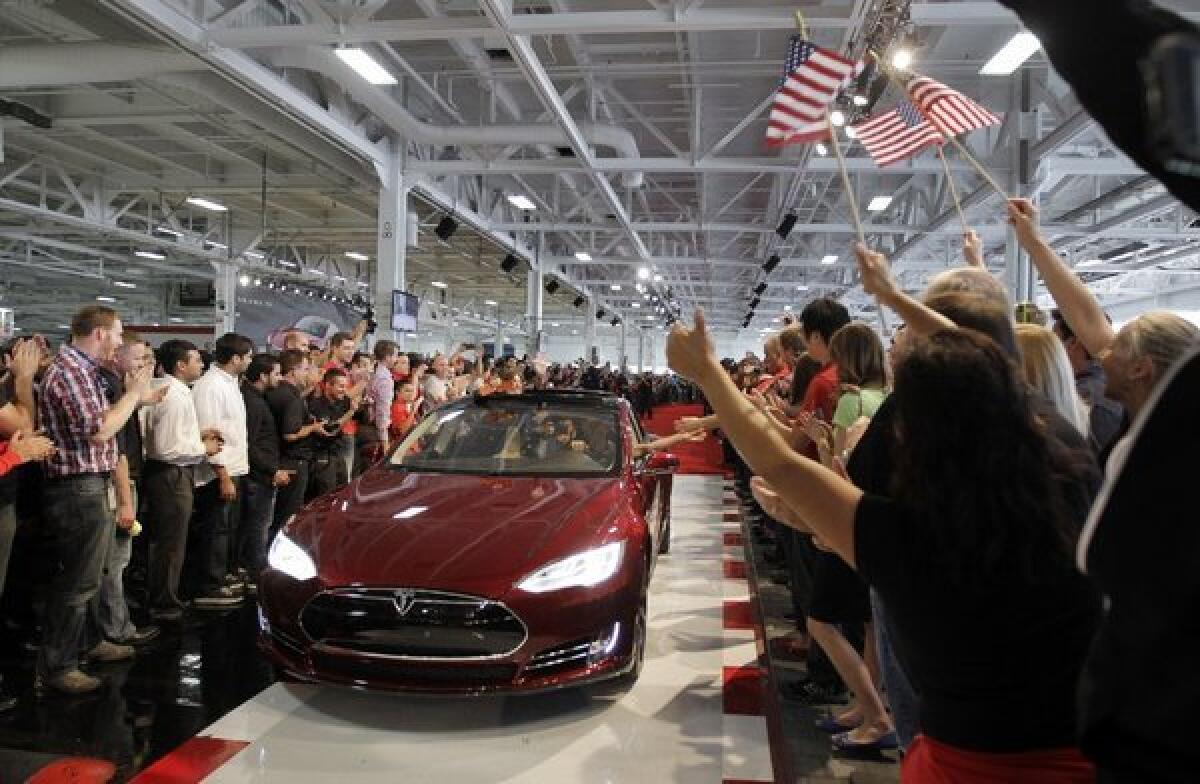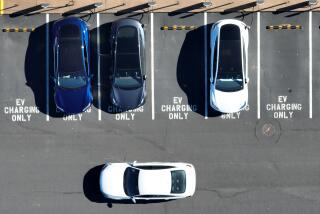Tesla boosts its charging network, but only the Model S can plug in

Tesla Motors Inc. Chief Executive Elon Musk has announced an accelerated rollout of fast super-charger stations across the U.S. and parts of Canada, promising to boost the current eight stations to 25 by midsummer.
By the winter months of this year, Musk said, coast-to-coast travel for the company’s electric car will be possible along Interstate 80. Musk said that 80% of the U.S. would have access to the $150,000-to-$300,000 stations by 2014, and that 98% of the nation would be covered by 2015.
But EV owners and supporters of electric-vehicle technology might not be as excited about the announcement as they had hoped.
PHOTOS: Kelley Blue Book’s 10 best green cars for 2013
The network of super-charger stations, capable of giving a two-thirds charge to a Tesla Model S sedan with a 60-kilowatt battery in just 20 minutes, can only be used by the $70,000-plus Model S.
The Palo Alto-based company’s planned Model X, a high-end SUV, isn’t expected until next year.
Not even the early adopters of Tesla cars, who bought the now-discontinued Roadster, will be able to take advantage of the new stations.
Musk said that charging technology has advanced significantly since the Roadster days.
The Roadster does not have the ability to take advantage of the super-charger network, Musk said Thursday in a teleconference interview with reporters. “Model S sedans had this technology designed into them at the start,” he said.
Alec Gutierrez, senior analyst for Kelley Blue Book, said the announcement was definitely a “feather in the cap for Tesla. It will ease the range-anxiety fears of anyone thinking about buying a Tesla Model S.”
But, he added, “this is a limited thing. It won’t do anything in terms of easing concerns for anyone else who is thinking about buying another kind of electric vehicle.”
Tom Saxton, chief science officer of the electric vehicle advocacy group Plug In America, said Tesla’s announcement is “still a big deal” even though the fast charger network will benefit only one vehicle on the road today.
“The Model S is the first electric vehicle that makes long road trips practical and convenient,” Saxton said.
“You can drive about three hours and stop for 20 minutes, charge it and get back on the road. No other electric car out there can do that right now,” he said.
The EPA says the Tesla Model S with a 40-kilowatt battery has a range of about 139 miles, while the 60-kilowatt battery extends that to 208 miles. With the top-of-the-line 85-kilowatt battery, the EPA says, the range of the Model S is 265 miles.
Asked whether it mattered that other electric vehicles would not be able to use the stations, Musk said that his company had to make a difficult choice.
“It’s extremely difficult” to make this kind of technology generic, he said. “We’re not trying to create a closed system, but we can’t wait for others to agree with our strategy. If we wait, it is going to take too long. Other manufacturers can either copy us or join us.”
ALSO:
Report: explosive growth ahead for automotive electronics
Honda joins electric vehicle pricing battle with a $259 lease for Fit EV
Small drop in gasoline prices makes dent in used hybrid, electric car values







